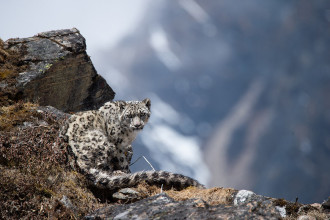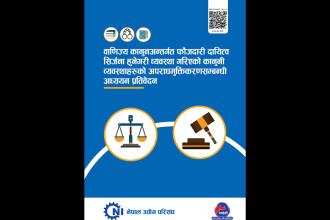
KATHMANDU: Nepal has announced its national estimate of the snow leopard population, marking a key milestone in efforts to conserve this iconic Himalayan species.
The Department of National Parks and Wildlife Conservation (DNPWC) and the Department of Forests and Soil Conservation (DoFSC) led the coordination, data collation, and analysis for this landmark assessment, offering crucial insights into the status of snow leopards and their habitats across the country.
The assessment, based on data from seven study regions, estimates Nepal's snow leopard population at 397 individuals, with a mean density of 1.56 individuals per 100 square kilometres. This achievement reflects Nepal's commitment to safeguarding snow leopards and their fragile mountain ecosystems.
"This national estimate is a historic step in Nepal’s conservation journey," said Dr Ramchandra Kandel, Director General of DNPWC. He explained that it provides a clearer picture of snow leopard populations and will guide future conservation strategies. Reaffirming Nepal’s commitment to protecting the species, he added, "We will continue working closely with local communities and global partners to ensure their long-term survival."
The assessment, supported by data gathered between 2015 and 2024, used advanced methods, including camera traps and genetic analysis of scat samples. The evaluation followed the Global Snow Leopard & Ecosystem Protection Programme (GSLEP)'s Population Assessment of the World’s Snow Leopards (PAWS) guidelines and involved researchers and conservation organisations, including WWF Nepal.
Badri Raj Dhungana, Director General of DoFSC, highlighted the challenges of conserving snow leopards outside protected areas. "A significant portion of Nepal’s snow leopard habitat lies outside designated areas," he stated, stressing the need for targeted conservation measures in these landscapes. He also underscored the importance of strengthening community-based initiatives, improving habitat connectivity, and mitigating human-wildlife conflicts.
Dr Ghana Shyam Gurung, Country Representative of WWF Nepal, described the achievement as a pioneering effort. He remarked, "The WWF Network is proud to have supported this initiative to establish a national population baseline for snow leopards." He emphasised that this data will guide participatory conservation efforts, ensuring interventions are prioritised where most needed. Dr Gurung also pointed out that collaboration among government agencies, conservation organisations, and local communities has been crucial for the success of snow leopard conservation, particularly in the face of challenges like climate change and infrastructure growth.
The findings of the assessment outline key conservation priorities, such as enhanced protection measures in snow leopard habitats, greater community involvement, and conflict mitigation strategies. They also stress the need to manage habitats beyond protected areas to ensure the species' long-term viability.
Snow leopards, found across 12 range countries in Asia, remain one of the least studied big cats. A WWF publication in 2021 revealed that only 23% of the species’ global range has been systematically studied, with empirical abundance data available for less than 3%. National population assessments in Mongolia, Bhutan, and India, guided by PAWS, complement Nepal's efforts and collectively contribute to a deeper understanding and improved conservation of the species and its high-mountain ecosystems.
This initiative underscores Nepal's global leadership in snow leopard conservation and highlights the need for sustained investment in scientific research, community-based conservation, and transboundary collaboration to ensure the future of this majestic species.
READ ALSO:
- DNPWC marks International Snow Leopard Day 2024
- 11th International Snow Leopard Day being observed today
- WWF Nepal marks Earth Hour 2025 with Bharatpur concert, environmental conservation efforts
- WWF Nepal, MoFE launch project to enhance climate transparency
- WWF marks Global Tiger Day with documentary, expert panel in Kathmandu
- WWF Nepal celebrates 31st anniversary, honours partners in sustainability






